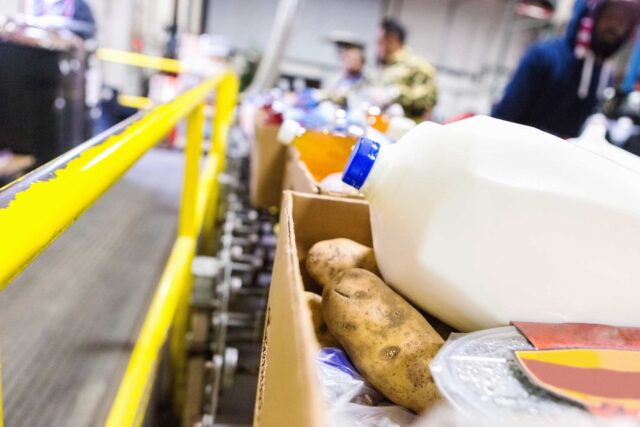Though poverty is typically measured for a calendar year, below we calculate poverty levels for the first quarter of 2023 to offer a more current perspective amid a shifting economic and policy landscape.
Employment—even full-time employment—does not eliminate poverty.
- In the first quarter of 2023, 8.1% of California workers age 25–64 were living in poverty (or 1.3 million), according to the California Poverty Measure (CPM), a research effort by PPIC and the Stanford Center on Poverty and Inequality that accounts for housing costs and safety net benefits. Of these workers, 84% were employed year round, with 47% working full time and 37% working part time; another 16% worked less than a full year. (The CPM poverty threshold is $39,900 for a family of four, on average).
- Poverty rates vary dramatically by employment status: among year-round workers, 19% of part-timers were in poverty, compared to only 5% of full-timers.
- Working poverty has declined since before the pandemic (by 1.7 percentage points since 2019), reflecting wage growth in sectors that employ many low-wage workers and the pandemic expansion of CalFresh benefits through March 2023.
- An additional 2.3 million working Californians (14.2%) were “near poor” in early 2023, with family resources between one and one and a half times the poverty line.
Service and agricultural workers tend to have higher poverty rates.
- One-fifth of building and grounds workers are poor as of early 2023, the highest rate across occupational groups. Workers in food preparation and serving, personal care, construction, farming, and health care support also have poverty rates above 13%.
- Across major sectors, three service industries have the highest working poverty rates (administrative services, other services, and leisure and hospitality), followed by construction and agriculture.
- Latinos are overrepresented among the working poor (53% vs. 38% of all working adults); whites are underrepresented (26% vs. 37% of all working adults). Differences are less notable for other groups.
- Over a quarter (28%) of working poor adults do not have a high school diploma, while a quarter (24%) have graduated high school and another quarter (25%) have completed some college. Still, 22% of working poor adults (about 300,000) hold a bachelor’s degree or higher.
Poverty rates among working adults are highest in southern, coastal California.
- For working adults, the highest poverty rates are in San Diego County (10%) and Los Angeles County (9.5%), while the Sacramento area (7%) and the Central Valley and Sierra counties (6%) have the lowest rates.
- Notably, regions with higher rates of poverty among working adults typically have higher shares of working poor adults employed full time and year round—indicating that factors beyond full-time employment (e.g., earnings and cost of living) make it hard for certain working adults to make ends meet.
Most working poor Californians live with other adult family members.
- Over one-quarter of single working parents are in poverty (27.9%), and a similar share of single working adults without children are poor (25.8%). Rates for adults who are married, cohabiting, or living in more complex family structures—for example, with extended family—are much lower (11% for those with children; 9% for those without children).
- Altogether, the vast majority of working poor are married, cohabiting, or living with other family (41% with children, 41% without children). Only 3% of working poor adults are single parents living without other adults, and another 16% are single living alone.
Social safety net benefits make up a small portion of the working poor’s budgets.
- Average earnings in working poor families totaled $28,000 in early 2023, constituting 82% of family resources. Most of the remainder comes from safety net benefits.
- Because safety net benefits often target families with children, working poor adults with no children rely more heavily on earnings alone (87% of their resources or $22,000 on average come from earnings). For those with children, earnings make up 76% of their resources, with additional resources coming from the federal and state Earned Income Tax Credits (8%) and CalFresh (9%), among other sources.
- Increasing earnings—through wage increases, hours worked, or career mobility—is consequential for the working poor. Many policies and programs, including child and elder care, health, and education and training, can improve work opportunities and outcomes.
Topics
COVID-19 Economic Mobility Economic Trends Economy Health & Safety Net Jobs and Employment Population Poverty & Inequality




